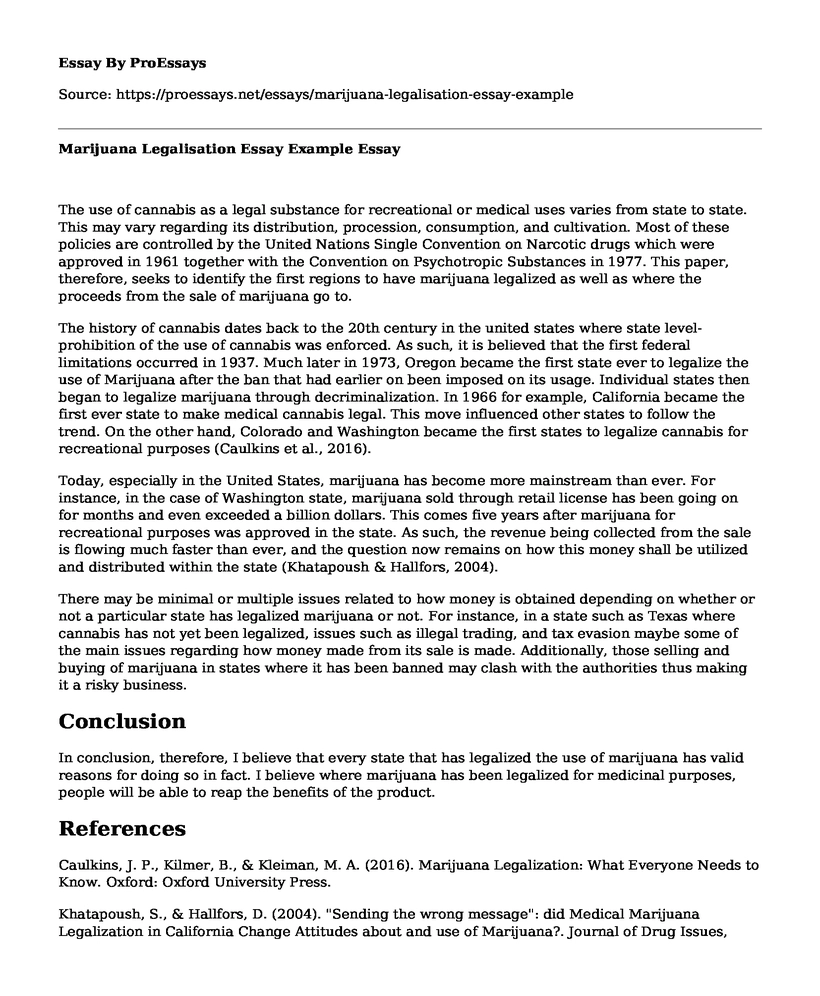The use of cannabis as a legal substance for recreational or medical uses varies from state to state. This may vary regarding its distribution, procession, consumption, and cultivation. Most of these policies are controlled by the United Nations Single Convention on Narcotic drugs which were approved in 1961 together with the Convention on Psychotropic Substances in 1977. This paper, therefore, seeks to identify the first regions to have marijuana legalized as well as where the proceeds from the sale of marijuana go to.
The history of cannabis dates back to the 20th century in the united states where state level-prohibition of the use of cannabis was enforced. As such, it is believed that the first federal limitations occurred in 1937. Much later in 1973, Oregon became the first state ever to legalize the use of Marijuana after the ban that had earlier on been imposed on its usage. Individual states then began to legalize marijuana through decriminalization. In 1966 for example, California became the first ever state to make medical cannabis legal. This move influenced other states to follow the trend. On the other hand, Colorado and Washington became the first states to legalize cannabis for recreational purposes (Caulkins et al., 2016).
Today, especially in the United States, marijuana has become more mainstream than ever. For instance, in the case of Washington state, marijuana sold through retail license has been going on for months and even exceeded a billion dollars. This comes five years after marijuana for recreational purposes was approved in the state. As such, the revenue being collected from the sale is flowing much faster than ever, and the question now remains on how this money shall be utilized and distributed within the state (Khatapoush & Hallfors, 2004).
There may be minimal or multiple issues related to how money is obtained depending on whether or not a particular state has legalized marijuana or not. For instance, in a state such as Texas where cannabis has not yet been legalized, issues such as illegal trading, and tax evasion maybe some of the main issues regarding how money made from its sale is made. Additionally, those selling and buying of marijuana in states where it has been banned may clash with the authorities thus making it a risky business.
Conclusion
In conclusion, therefore, I believe that every state that has legalized the use of marijuana has valid reasons for doing so in fact. I believe where marijuana has been legalized for medicinal purposes, people will be able to reap the benefits of the product.
References
Caulkins, J. P., Kilmer, B., & Kleiman, M. A. (2016). Marijuana Legalization: What Everyone Needs to Know. Oxford: Oxford University Press.
Khatapoush, S., & Hallfors, D. (2004). "Sending the wrong message": did Medical Marijuana Legalization in California Change Attitudes about and use of Marijuana?. Journal of Drug Issues, 34(4), 751-770.
Cite this page
Marijuana Legalisation Essay Example. (2022, Nov 20). Retrieved from https://proessays.net/essays/marijuana-legalisation-essay-example
If you are the original author of this essay and no longer wish to have it published on the ProEssays website, please click below to request its removal:
- Is Torture Right or Wrong? - Paper Example
- The Illinois Criminal Code Paper Example
- Summary of Legislation in Juvenile Crime Essay Example
- Essay Sample on Crime in New York Between 1850 and 1950
- Paper Example on Let's Do It: MOCA, Business Club & Social Awareness Symposium
- Plain View Doctrine Permits Search & Seizure Without Probable Cause - Essay Sample
- Case Study Example on Camille & Sonya Make Oral Contract: Legally Binding Obligation







